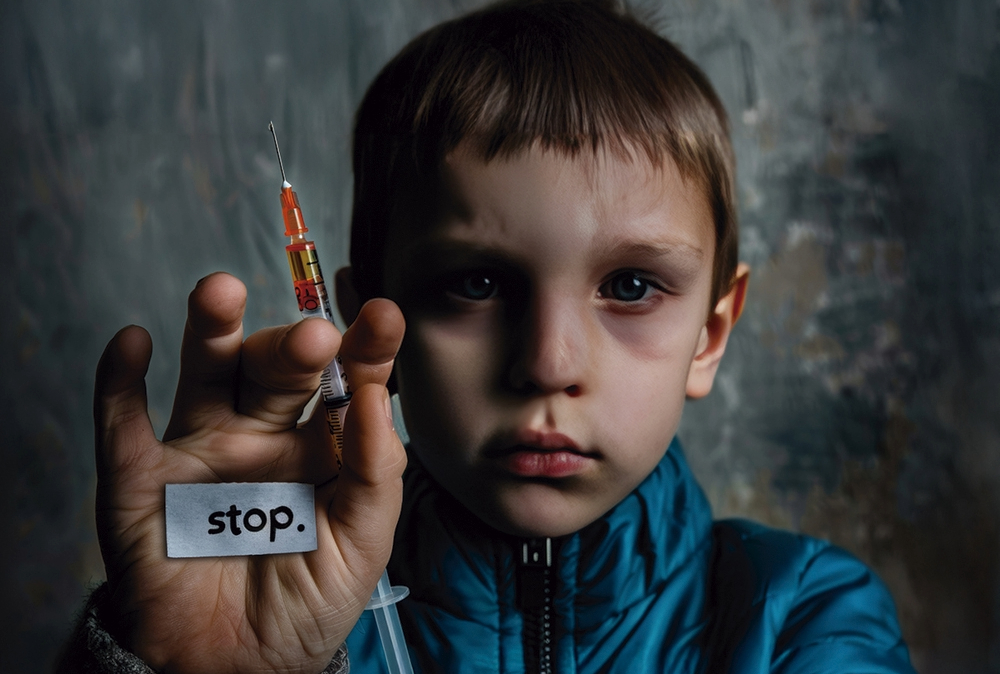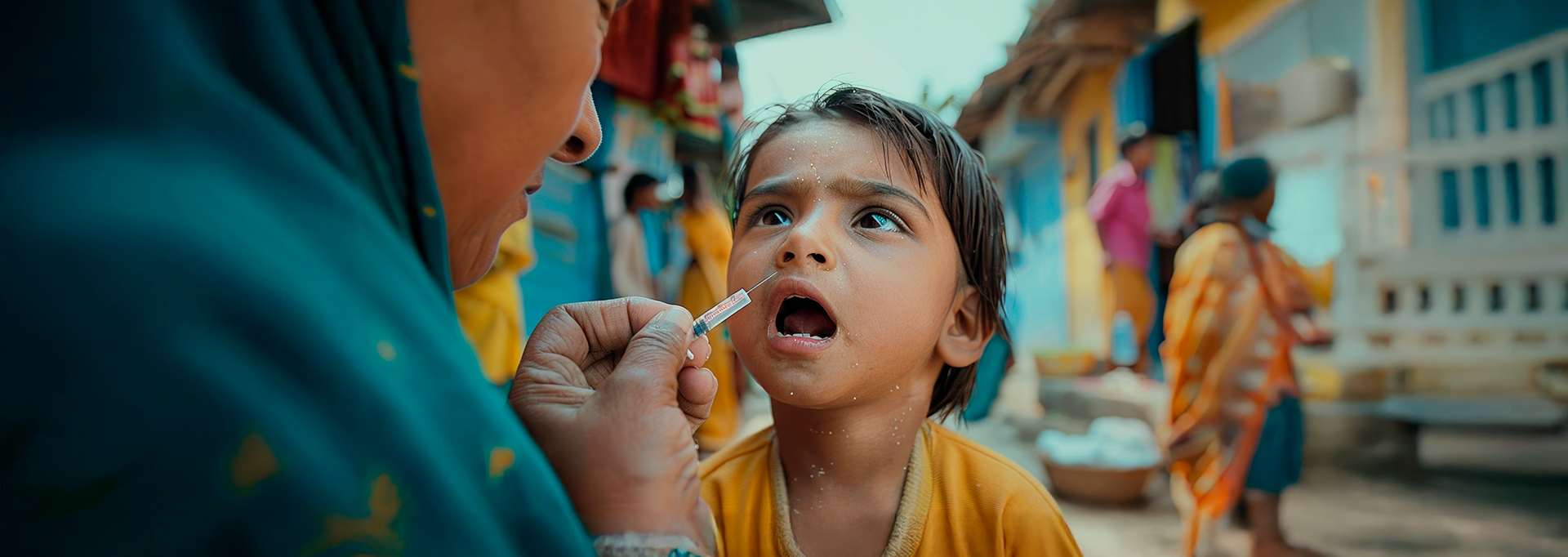
Vaccines: a ticking time bomb for public health
29 October, 2024
Since when do judges decide what it means to be a woman?
19 November, 2024
5 November, 2024
For decades, we have been repeatedly told that vaccines are one of the greatest successes of modern medicine. However, behind this narrative lies a much darker reality.
The polio vaccine has long been touted as a landmark in the eradication of diseases. Under the label of “polio,” multiple illnesses that had nothing to do with the poliovirus have been grouped together, and mass vaccination campaigns, far from being the definitive solution, have caused more problems than are publicly acknowledged.
Confusing diagnoses: what was "polio" really?
Before vaccines became the “mandatory” response to combat polio, the diagnosis of this disease was terribly imprecise. In the first half of the 20th century, practically any case of paralysis, regardless of its cause, was labelled as “polio.” Inflammations, illnesses resulting from poisoning, meningitis... all of these and much more were classified as polio.
These conditions were not caused by the poliovirus. In fact, until 1958, laboratory tests were not used to confirm whether a patient actually had the poliomyelitis virus. The result? A massive wave of misdiagnoses that inflated the numbers and created the illusion that polio was an out-of-control epidemic.
According to oncologist and holistic therapist Nicholas González, who also specializes in immunology and nutrition, in 1949, considered an epidemic year in the United States, there were 42,000 reported cases of polio and 2,700 deaths. Despite the alarmism surrounding the disease, most of those infected had mild symptoms or were asymptomatic.

In low-income urban areas of the 1940s, up to 90% of the population showed antibodies against polio without having experienced severe symptoms. Although deaths and cases of paralysis increased in the 1950s, they did not reach the levels of a true health catastrophe, as was repeatedly described in the media.
González suggests that the indiscriminate use of antibiotics and excessive hygiene protection for children and infants undermines natural immunity and increases the likelihood of developing serious illnesses.
Magical changes in diagnostic criteria
In 1955, just as the vaccine was introduced, there was a radical shift in the criteria for diagnosing polio. Before that year, if someone experienced paralysis, even if they recovered within 24 hours, they were diagnosed with poliomyelitis. After the introduction of the vaccine, doctors had to wait 60 days before confirming a case of paralytic polio. If the patient recovered before that period, it was no longer counted as polio.
What did this change imply? Simple: cases of paralytic polio dropped dramatically, not because the vaccine was a miracle, but because the criteria for counting cases became much stricter. In other words, the diagnosis was manipulated to create the impression that the vaccine was a success. Between 1955 and 1957, the number of reported cases fell, but this decrease had already been predetermined by the simple fact that the definition of the disease had been changed.
Vaccines: solution or new threat?
The oral vaccine developed by Dr Sabin in 1960 (known as OPV, Oral Polio Vaccine), which was used in many countries for decades, caused serious problems. Although it was designed to prevent the disease, it used a live attenuated virus, which meant that, in some cases, the vaccine itself caused polio.
Jonas Salk, the creator of the injectable vaccine in the 1950s, warned about the dangers of the OPV. He stated clearly that this vaccine could cause polio in those who were vaccinated or in those who came into contact with them. And he was right.
What happened with the OPV? In several countries, including Argentina until 2019, this harmful vaccine was used despite causing outbreaks of polio. Polio outbreaks resulting from vaccination were recorded in numerous countries over decades. In some cases, the virus strains from the vaccine mutated and spread in communities with poor sanitary conditions. Ironically, the solution we were sold was creating more cases of the very disease it was supposed to eradicate.
China, Egypt, Haiti, Madagascar, and the Philippines, among other countries, have been victims of polio outbreaks and vaccine-derived associated syndromes, as developed by doctors Harry F. Hull from the Minnesota Department of Health and Philip D. Minor from the Virology Division of the National Institute for Biological Standards and Control in the UK in the article "When Can We Stop Using the Oral Poliovirus Vaccine?"
Hull and Minor suggest that eliminating such vaccines and redirecting funds to other public health causes would be the winning option, in a context where the continued use of oral vaccines causes more problems than it solves.

The justification for vaccination: an exaggerated fear
To promote mass vaccination, a highly effective strategy has always been employed: fear. Images of children in iron lungs and fear-driven media campaigns convinced the public that polio was an imminent threat to everyone. But what wasn't mentioned is that, in reality, only a small percentage of those infected with the poliovirus developed paralysis. In fact, most people infected didn't even exhibit severe symptoms.
Authorities and the media created a narrative of fear that led to mass vaccination without a critical assessment of the true scale of the problem.
The case of the Philippines: mass vaccinations without justification
After one of the strongest typhoons struck the Philippines in 2013, mass vaccinations began for children: over 500,000 children in the affected areas were vaccinated in record time. Despite the fact that measles rates had been very low and declining, and that there had been no reported cases of polio since 1993, children continued to be vaccinated against these diseases.
The United States quickly deployed its vaccination armies because the pharmaceutical sector needed new markets. Atypical outbreaks of measles and polio emerged following these campaigns, causing local populations to be suspicious, with many Filipinos resisting these imposed vaccinations.
More recently, in 2022, there was an approximate 700% increase in circulating vaccine-derived poliovirus cases, according to findings from a CDC report that tracked cases from January 2021 to December 2022.
Economic and political interests: the true driving force behind vaccines
Vaccines are a multi-billion-pound industry. Pharmaceutical companies have been profiting enormously for decades from the sale of vaccines and subsequent booster doses.
Mass vaccination campaigns aren't solely justified on medical grounds. They also serve as a political strategy to showcase "achievements" in public health, even when the data behind these campaigns doesn’t always align with the enthusiasm. Polio, which was already on the decline due to improved sanitary conditions, was used as a banner for vaccination, even though it wasn’t the cause of many of the diseases diagnosed under that label.
Before accepting any medical intervention, we must question the official narratives and seek the truth behind the statistics. Far from being an untouchable achievement, vaccines have left a legacy of side effects and unanswered questions.
It’s time to reassess what we think we know
In recent years, the healthcare-political complex has attempted to impose vaccines on vast populations. For instance, in the Philippines, two cases of polio in 2019 were enough to justify an aggressive campaign to vaccinate no less than 95% of the population under five years old—a common tactic for population control. The 2011 case in India is infamously well-known: a single, well-planned campaign resulted in 48,000 cases of paralysis and deaths.
More recently, Professor Didier Raoult, a renowned specialist in infectious diseases, has voiced critical comments on the polio vaccine currently being used in Gaza. Raoult pointed out that the virus in this vaccine is a vaccine-derived virus, meaning it’s man-made, and that its use has increased polio cases in the region. Raoult claims that there are 30 times more poliomyelitis syndromes caused by the jab than by the virus itself.
The polio vaccine that the WHO plans to distribute in Gaza is the new Oral Polio Vaccine Type 2 (nOPV2). In 2023, the co-chair of the Global Polio Eradication Initiative (GPEI), who also serves as Deputy Director of the Bill and Melinda Gates Foundation, admitted that this vaccine can cause paralysis. A report from an Indonesian research group revealed data from nOPV2 trials, showing that 40% of participants experienced severe adverse events, alongside prolonged virus shedding, which could be particularly damaging in areas with poor sanitary conditions. Based on wastewater analysis, Israel and the WHO have decided to administer this vaccine to 600,000 Palestinian children, despite knowing its potential to cause paralysis.
Why do so many people consider vaccines to be safe?
The answer may lie in a lack of information and faulty assumptions. The FDA doesn’t directly test vaccines, although most people take that for granted; instead, manufacturers submit their own reports, selectively sharing the information they wish to.
Furthermore, instead of comparing new vaccines with placebos, as is done with other medications, they are often contrasted with previous formulas or toxic substances, giving an illusion of safety without providing an unbiased assessment.
Vaccines can contain components like viruses from animals (such as monkeys or birds), which are introduced into the body, as well as aluminium, mercury, and proteins derived from human foetuses, among other elements. Given that diseases result from a combination of genetics and environment, some children show no adverse reactions to these injections, while others may suffer their consequences. This difference creates a false perception of the actual impact of vaccines.

Alternatives: the perspective of Jack Kruse
Jack Kruse, a neurosurgeon by training, is not merely a medical practitioner; he is a crusader against misinformation. His critiques extend beyond the pharmaceutical industry to encompass the interconnectedness of technology and public health. His holistic perspective offers a novel approach to wellness.
Kruse advocates for a rethinking of healthcare. His integrative approach, which intertwines biology, environment, prevention, and personalization, provides a new lens through which to view health. In a world where medicine often focuses on treating symptoms, Kruse's philosophy emphasizes the need for a deeper, more comprehensive understanding of wellbeing.
Holistic techniques, including lifestyle changes such as improved diet, stress reduction, and regular physical activity, may also play a role in preventing infectious diseases, including polio.
Another promising strategy in the treatment of various diseases, such as poliomyelitis and certain cancers, is immunotherapy. This approach involves the use of monoclonal antibodies, which are proteins designed to specifically bind to and neutralize viruses. While primarily used to treat those already infected, immunotherapy could also have preventive applications for high-risk individuals. It may help reduce viral load and mitigate disease severity.
Kruse has extensively researched the relationship between technology, politics, and public health, highlighting troubling aspects of vaccine development and administration. He contends that some polio vaccines, developed in monkey kidney tissue culture in the 1960s, were contaminated with SV40 (a simian virus). This virus, according to his theory, posed an inadvertent risk to public health. Over the years, scientific studies have explored the link between SV40 and certain tumors, particularly those affecting the brain, bones, and lymphatic system. The potential contamination of the polio vaccine with SV40 is a cornerstone of Kruse's critique of medical institutions and their handling of vaccination.
Alton Ochsner, a renowned physician and political figure, was approached by the CIA due to grave concerns about the potential effects of the SV40 virus. The mission was clear: to investigate the virus and find ways to mitigate it. However, what initially seemed like a legitimate medical intervention, according to Kruse, devolved into a series of clandestine experiments involving genetic manipulation and radiation.
In their search for a solution, experiments were conducted on infected animals using radiation, with dire consequences: rather than eradicating the virus, they made it more lethal and highly oncogenic.
Kruse posits that the failed outcomes of these experiments were not abandoned but redirected towards a more sinister purpose. He asserts that the project was transformed into a covert CIA operation to create a biological weapon that could be employed in key geopolitical contexts, amidst the Cold War or tensions with Cuba.
The experiments with the polio vaccine and the SV40 virus are not merely a historical review; they serve as a contemporary cautionary tale. During the COVID-19 pandemic, Kruse has expressed deep skepticism towards government and medical institutions' handling of health crises. The SV40 and polio vaccine history, he argues, has taught him not to blindly trust official narratives, especially when they involve biotechnology and public health.
Despite being presented as a triumph of modern medicine, the story of polio reveals a web of imprecise diagnoses, changes in diagnostic criteria, and severe adverse effects linked to vaccines. The mix of economic interests, statistical manipulations, and fear campaigns has distorted the public’s perception of the true nature of these substances that have destroyed lives. And the fact is, polio vaccine harms more than it cures and no person in this world needs it.
References:
Laboratory Data on the Detroit Poliomyelitis Epidemic 1958 | G.C. Brown | Journal of the American Medical Association, vol. 172. Feb 1960.
The present status of polio vaccines | H. Ratner, 1969.
Polio Vaccination, still causing polio after all these years | Children’s Health Defense, 2019.
How the U.S. case might tie into the global upswing in polio | NPR, 2022.
Surging cases have dashed all hope polio might be eradicated | Science, 2019.
Polio vaccination and vaccine-associated paralytic poliomyelitis, VAPP | World Journal of Virology, 2012.
VIDEO: Did the polio vaccine really eradicate polio? | Suzanne Humphries, MD, 2012




